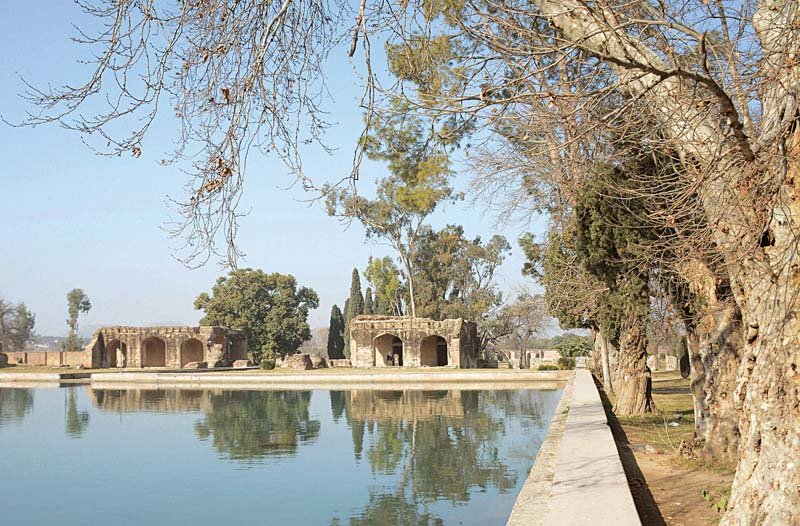
Wah Gardens, a national heritage and remnant of the Mughal era, now lay in a state of decay. Also known as the Mughal Gardens, the tourist spot is situated a few kilometers north of Wah Village.
A small structure was first established at the spot by General Raja Maan Singh, Emperor Jahangir’s brother-in-law who was stationed there during the late 1500s.
Indian President Pranab Mukherjee's floral exchanges
Jahangir would often visit and stay at the place during his travels and campaigns and fish at the pond, situated in the centre of the spot. He became so fond of the place that he renamed it Wah, after uttering the Urdu exclamation Wah (Wow!) on first setting eyes on the place. It was previously called Jalal Sar.
In the mid-1600s, Shah Jehan stopped at Wah on his way to Kabul. Fascinated by its beauty, he asked a famous architect of his time, Ahmed Maamar Lahoree, to transform the scenic spot into an enclosed garden filled with fountains, canals, warm water pools, baradaris (12-door pavilions), a hammam, and a rest house.
For many generations, the lush green garden continued to serve as a rest spot for Mughal emperors while on their way to Kabul. Comprised of crisscrossed canals and waterfalls over 20 acres of land, with baradaris built on different levels, and a pond positioned right in the centre, the garden is now a mere shadow of its past glory.

Only the foundations of most structures can now be seen. The Mughal artwork on the ceilings and walls of the remaining structures, after years of neglect, are barely visible. Even the pond, so beloved by Jahangir, is highly polluted.
11 tourist attractions to visit in Pakistan
Although the main building is now dilapidated, Wah Gardens continue to be a popular recreational spot for families and youngsters who come to swim, picnic beside the pond and go for walks.
A café located near the entrance gate serves snacks and drinks. “Around 30 to 50 people come here on a good day,” shared Muhammad Bashir, the café in-charge.
He told The Express Tribune that over the years there has been a steep decline in the number of visitors due to the poor state of maintenance and facilities due to sheer negligence by the authorities.
“More people from the neighbouring cities visit during summer but it’s not the same as it used to be,” he said.
“There are only two gardeners and two watchmen who take care of the entire premises,” Ghulam Abbas, who has been working at the ticket booth for the last twelve years, said.
“We are short on staff as replacements for those who have retired haven’t been hired.”
He further said that earlier the local government was looking after the restoration work but now the project is under the Punjab government.
“There are not many places in Wah where youngsters can hang out; therefore, we mostly end up coming here,” Rehmatullah Khan, a student visiting the garden bemoaned.

“Many people fall sick after bathing in the pond because the water is highly polluted.”
Even if a semblance of their past splendour is revived, a multitude of tourists would flock to the gardens and stimulate the area’s economy.
Published in The Express Tribune, January 25th, 2016.



1725612926-0/Tribune-Pic-(8)1725612926-0-165x106.webp)













COMMENTS
Comments are moderated and generally will be posted if they are on-topic and not abusive.
For more information, please see our Comments FAQ